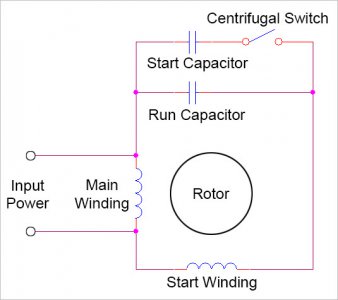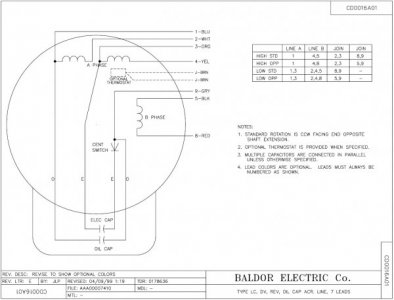It is unclear as to the wiring of the capacitors in the motor circuit, so I would not assume that the capacitors are in parallel. Given that Jin Shin is a major Taiwanese motor manufacturer, I would not second guess their specifications for the capacitors. As I noted, Baldor (and a number of other motor manufactures) spec a 125VAC capacitor for the auxiliary start wiring as shown above. When the capacitors are run in parallel the Baldor motors spec a 250VAC electrolytic and a 370 VAC oil capacitors. The assumption is the start capacitor is in the circuit for a very short period of time, which may not have been the case in this situation. There is also a percentage of initial failure. Typically I see a much higher capacitor failure rate of the Chinese single phase motors, but rarely the Taiwanese motors. The Jin Shin motors are used in many of the PM mills and SB/Grizzly mills, and I haven't heard of any single phase motor failures. Given that the wiring connections to the capacitors do not look like something from the factory, it is possible that they may not be the original caps but they are both of Taiwanese origin which suggests they may be OEM? So some further details as to the brand of mill and if it was purchased new or used might shed some light on the discussion.
If you look at HVAC/Compressor motor start electrolytic caps rated at 400 uF 250 VAC you are looking at something in the 4 3/8 in x 2 1/16 can size, a 60uf 370VAC oil motor run would be a similar size. My compressor motor has a large compartment for these size of capacitors, but I have not seen this on mill/lathe single phase motors. I would start by contacting the mill manufacturer to get replacements capacitors/verify specs, and also checking the start switch.


